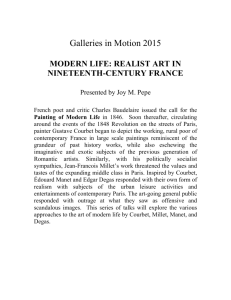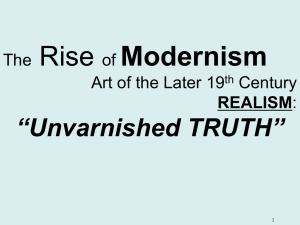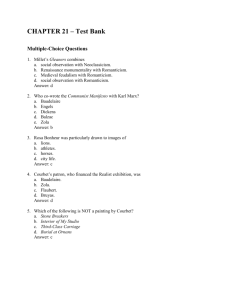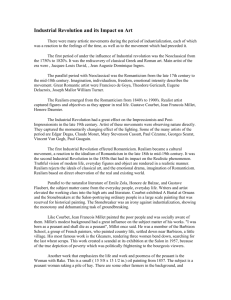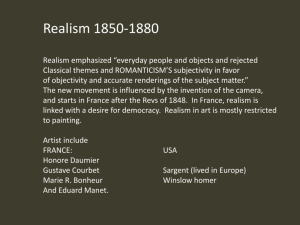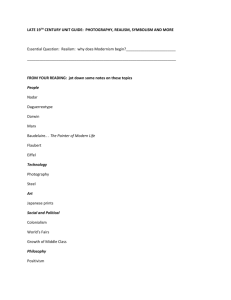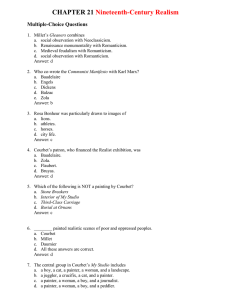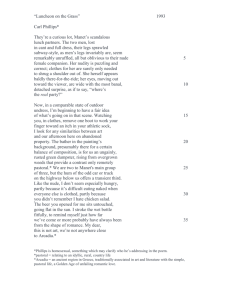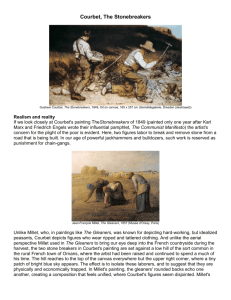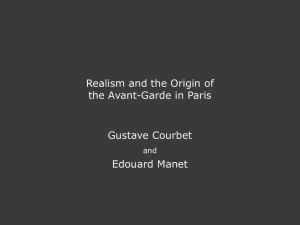19th Century Realism
advertisement
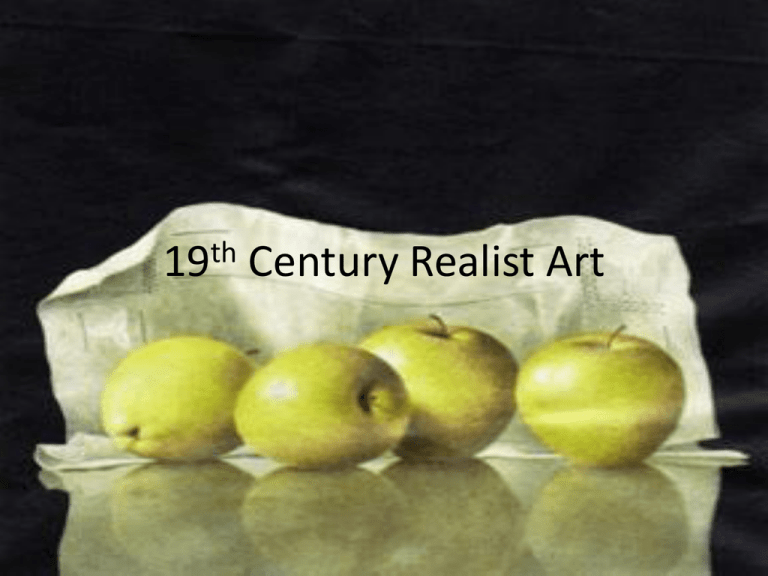
19th Century Realist Art REALISM • Subject matter: life as it is • Themes: ordinary places and people. • Theory of art: to report and describe reality as accurately and honestly as possible; to denounce the workers class situation. • Space: in the open air • Figures: realistic, individualistic Jean-Francois Millet (1814-1875) • realist artist • painted rural and working class people, especially peasants • conveys a sense of admiration for common man • his artwork reflects socialist ideas of the time. Jean-Francois Millet In 1848 he chose to exhibit The Winnower, a painting depicting peasant life. It was the first of many rural scenes based on memories of his own childhood. Criticized for allowing socialist concerns to infiltrate his art, Millet stated that it was “the human side” of life that he wished to portray. Jean Francois Millet, The Sower, 1858 Honore Daumier (1808-1879) Daumier was concerned with the social problems of the time and it reflected through his work. He used satire to point out his social ills. Honore was deeply interested in people, especially the underprivileged. In Third-Class Carriage he shows us, with great compassion, a group of people on a train journey. Honore makes no attempt to glorify the lower classes, instead, he depicted them as he saw them. Millet, The Gleaners, 1857 Gustave Courbet •represented French society as he saw •made no attempt to beautify the French landscape or people •Criticized because his work was too crude in subject matter and technique. •Promoted working class cause. Gustave Courbet The Winnowers was created by Courbet at the peek of his political technique to his art. He depicted women who were tired looking over worked as an example of the run down working class. COURBET: The Stone Breakers Rosa Bonheur, Plowing at Nivernais, 1850 Rosa Bonheur, The Horse Fair, 1853 COURBET: Proudhom and his daughters Edouard Manet (1832-1883) • defiance of popular tastes • led the way to Impressionism • used realism in a way related to photography, no conscious effort to depict beauty Edouard Manet Manet began his career with The Absinthe Drinker (1858), a painting depicting a debauched and solitary man amongst the shadows of the back streets of Paris. Paintings like the Absinthe Drinker portray a darker aspect of Parisian life which was quite removed from Manet's circle, but nonetheless very real. Edouard Manet, Portrait of Emile Zola, 1868 • The Young Flautist • Or, The Fifer Realist artists were concerned with: • scenes of contemporary life without romantic sentiment • art for art’s sake •the artist is separate from and ahead of mainstream culture. Edouard Manet, Bar at the Follies-Bergeres, 1883
